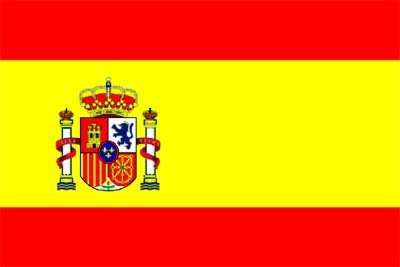TAREA 4: Tiempo presente continuo, Nacionalidades, Estados de Animo, Profesiones, Preposiciones, Dias, Meses, Climas, Numeros, Matematicas, Modos de ser y Adjetivos.
Ahora que conocemos el gerundio, estamos preparados para aprender los tiempos continuos; con los que vamos a poder a expresar ideas más complejas. Esta lección de inglés está dedicada al presente continuo, tiempo verbal que expresa acciones del presente pero con ciertos matices que lo diferencian del presente simple. Antes de ver como se usa el presente continuo, vamos a ver como se forma. Posteriormente veremos como negar este tiempo verbal y como formar preguntas con el mismo. A continuación presentamos una tabla en donde se muestra la conjugación del presente continuo. A partir de esta tabla veremos cómo se forma este tiempo verbal.
Conjugación | Inglés | Español |
1ª per. singular | I am talking | yo estoy hablando |
2ª per. singular | you are talking | tú estás hablando |
3ª per. singular | he is talking she is talking It is talking | él está hablando ella está hablando (para objetos) |
1ª per. plural | we are talking | nosotros/as estamos hablando |
2ª per. plural | you are talking | ustedes estan hablando |
3ª per. plural | they are talking | ellos/as están hablando |
Uso del presente continuo
Este tiempo verbal podemos usarlo para expresar distintas cosas; y en diferentes circunstancias:- Para referirnos a acciones que se están desarrollando en el mismo momento en el que se habla.
I am reading a book -> Yo estoy leyendo un libro (en este preciso instante)
- Tambien utilizamos el presente continuo para describir cosas que suceden alrededor del momento al que estamos hablando.
She is studying English -> Ella está esstudiando inglés (no precisamente ahora)
- Podemos usar el presente continuo para referirnos a acciones que se vienen produciendo con cierta frecuenca.
You are always working -> Estás siempre trabajando (lo hace frecuentemente)
- Cuando hablamos de una acción del futuro que ya hemos decidido que vamos a desarrollar. En este caso debemos mencionar el tiempo en el que vamos a desarrollar dicha acción.
I am going to Madrid next week -> Voy a Madrid la semana que biene
Negación e interrogación del presente continuo
Para negar el presente continuo tenemos que colocar la partícula not entre el auxiliar y el verbo principal. Para hacer preguntas tenemos que poner primero el auxiliar y después el pronombre personal.I am not eating now -> Yo no estoy comiendo ahora
Are you eating? -> ¿Estás comiendo?
Are you eating? -> ¿Estás comiendo?
ENGLISH TRANSLATION
Present Continuous Tense
Now that we know the gerund, we are ready to learn the continuous time, with which we will be able to express more complex ideas. This English lesson is devoted to the present continuous tense that expresses actions of this but with some nuances that distinguish this simple. Before seeing how to use the present continuous, let's see how it is formed. Then see how denying this tense and how to form questions with it. Below is a table showing the continuous present tense. From this table we will see how this time verbal.Conjugation English Spanish1 st per. I am talking singular I'm talking2 nd per. you are unique you are talking about talking3 rd per. I is singular talkingshe is talkingIt is talking he is talkingshe is talking(For objects)1 st per. we are talking plural us / as we are talking2 nd per. you are talking plural you / as you are talking about3 rd per. They are talking plural them / as they are talkingYou see, to form the present continuous verb to be used as the auxiliary and main verb in gerund. What matters is the gerund construction, and once this is done, insert the verb to be for use as an auxiliary.Use the present continuousThis tense can use it to express different things and in different circumstances:1. To refer to actions that are being developed at the same time it is spoken.I am reading a book -> I'm reading a book (in right now)2. We also use the present continuous to describe things that happen around the time that we are talking about.
She is studying Español -> She is esstudiando English (not just now)3. We can use the present progressive to refer to actions that have taken place with some Freq.
You are always working -> You are always working (it does frequently)4. When we speak of a future action we have already decided that we will develop. In this case we mention the time in which we will develop the action.
I am going to Madrid next week -> I'm Madrid the week bieneNegation and interrogation of the present continuousTo deny this continuum we have to place the particle not between the auxiliary and main verb. For questions we have to first aid and then the personal pronoun.I am not eating now -> I'm not eating nowAre you eating? -> Are you eating?
'NATIONALITIES - NACIONALIDADES'
-Mexican
-American
-German
-Japanese
-Russian
-English
-Chinesse
-Brazilian
-Argentinean
-Spanish
'MOODS - ESTADOS DE ANIMO'
Alegre - Cheerful
Enojado - Angry
Triste - Sad
Aburrido - Boring
Avergonzado - Embarrassed
 Apatico - Apathetic
Apatico - Apathetic Confundido - Confused
Ansioso - Anxious
Angustiado - Distressed
'PROFESSIONS - PROFESIONES'
-Writer - Escritor
-Waiter - Camarero
-Veterinario - Veterinary
-Psicologo - Psychologist
-Pediatra - Pediatrician
-Periodista - Journalist

-Actriz - Actress
-Panadero - Baker
-Cajera - Cashier
-Artesano - Craftsman
'PREPOSITIONS - PREPOSICIONES'
La lista tradicional de preposiciones del idioma español es: a, ante, bajo, cabe, con, contra, de, desde, en, entre, hacia, hasta, para, por, según, sin, so, sobre, tras.
The traditional list of Spanish prepositions is to, first, low fit, with, against, from, in between, to, to, for, as without, so, on after.
'DIAS DE LA SEMANA - DAYS OF THE WEEK'
-Martes - Tuesday
-Miercoles - Wednesday
-Jueves - Thursday
-Viernes - Friday
-Sabado - Saturday
-Domingo - Sunday
'MESES DEL AÑO'
-Enero - January
 -Febrero - February
-Febrero - February
-Marzo - March
-Abril - April
-Mayo - May
-Junio - June
-Julio - July
-Agosto - August
-Septiembre - September
-Octubre - October
-Noviembre - November
-Diciembre - December
'MESES DEL AÑO'
-Enero - January
 -Febrero - February
-Febrero - February-Marzo - March
-Abril - April
-Mayo - May
-Junio - June
-Julio - July
-Agosto - August
-Septiembre - September
-Octubre - October
-Noviembre - November
-Diciembre - December
'CLIMAS - WEATHER'
| |||||||||||||||
 |  |  |  | ||||||||||||
HAIL (granizo) | RAIN (lluvia) | SNOW (nieve) | CLOUDS (nuves) | ||||||||||||
 |  |  |  | ||||||||||||
LIGHTNING (relampagos) | STORM (tormenta) | TORNADO (tornado) | WIND (viento) | ||||||||||||
en base a estas palabras se pueden formar algunas expresiones referente a los climas:
ex:
-Hoy es un día lluvioso.
Today is a rainy day.
-Está lloviendo.
It's raining.
-Hoy hace frio
Today it's cold
-Hoy hace calor
Today's hot
-El clima esta templado
The weather is mild
-Hay mucha humedad.
Humidity is high.
-El clima es calido
Weather here is warm
-Esta callendo granizo.
Is falling hail.
-Se acerca una tormenta.
A storm is coming.
-El cielo esta nublado.
The sky is cloudy.
-Hay mucho viento.
It is windy.
-Esta nevando
It's snowing
'NUMEROS - NUMBERS'
Lista de los números en inglés, con su escritura original y pronunciación:.
* 1 (el número) - One (cómo se escribe en inglés) - uán (cómo se pronuncia; lee esto como si estuviera escrito en español).* 2 - dos
* 3 - Tres
* 4 - Cuatro
* 5 - cinco
* 6 - seis
* 7 - Siete
* 8 - ocho
* 9 - Nueve
* 10 - Diez
* 11 - Once
* 12 - Doce
* 13 - Trece
* 14 - Catorce
* 15 - Quince
* 16 - Dieciséis
* 17-Seventeen
* 18 - dieciocho
* 19 - Diecinueve
* 20 - Veinte
* 30 - Treinta
* 40 - cuarenta
* 50 - cincuenta
* 60 - sesenta
* 70 - Setenta
* 80 - ochenta
* 90 - Noventa
* 100 - Ciento
* 200 - Doscientos
* 1000 - Mil
Para contar en inglés, debes aprender las cifras del uno al veinte, las demás decenas, a decir cien, mil y un millón. ¿Y cómo se dicen los números faltantes en inglés?. Por ejemplo, 23 (twenty three, en inglés) se dice "tuenti zrii", es decir, sólo tienes que combinar las cantidades con sus pronunciaciones correspondientes. Otro ejemplo: tres cientos quince (three hundred and fifteen) se dice zrii jándred and fiftiin. Otro más: Quinientos veinticinco (Five hundred and twenty five) se dice" faiv jándred and tuenti faiv". Ahora uno con cifras de a miles: 1250 (One thousand two hundred and fifty), "uan zausnd tú jándred and fifti". Terminemos con uno realmente grande: 1.470.000 (One million four hundred and seventy thousand) se pronuncia "uan mílion foar jándred and seventi zausnd) Siguiendo esta lógica, debes agregar la palabra "and", que quiere decir "y", al usar los cientos, miles y millones, antes de pasar a las decenas. Siempre igual, así de fácil. De esta manera has aprendido cuáles son los números en inglés, y además ya sabes como pronunciarlos correctamente. Ahora a practicar.
* 1 (el número) - One (cómo se escribe en inglés) - uán (cómo se pronuncia; lee esto como si estuviera escrito en español).* 2 - dos
* 3 - Tres
* 4 - Cuatro
* 5 - cinco
* 6 - seis
* 7 - Siete
* 8 - ocho
* 9 - Nueve
* 10 - Diez
* 11 - Once
* 12 - Doce
* 13 - Trece
* 14 - Catorce
* 15 - Quince
* 16 - Dieciséis
* 17-Seventeen
* 18 - dieciocho
* 19 - Diecinueve
* 20 - Veinte
* 30 - Treinta
* 40 - cuarenta
* 50 - cincuenta
* 60 - sesenta
* 70 - Setenta
* 80 - ochenta
* 90 - Noventa
* 100 - Ciento
* 200 - Doscientos
* 1000 - Mil
Para contar en inglés, debes aprender las cifras del uno al veinte, las demás decenas, a decir cien, mil y un millón. ¿Y cómo se dicen los números faltantes en inglés?. Por ejemplo, 23 (twenty three, en inglés) se dice "tuenti zrii", es decir, sólo tienes que combinar las cantidades con sus pronunciaciones correspondientes. Otro ejemplo: tres cientos quince (three hundred and fifteen) se dice zrii jándred and fiftiin. Otro más: Quinientos veinticinco (Five hundred and twenty five) se dice" faiv jándred and tuenti faiv". Ahora uno con cifras de a miles: 1250 (One thousand two hundred and fifty), "uan zausnd tú jándred and fifti". Terminemos con uno realmente grande: 1.470.000 (One million four hundred and seventy thousand) se pronuncia "uan mílion foar jándred and seventi zausnd) Siguiendo esta lógica, debes agregar la palabra "and", que quiere decir "y", al usar los cientos, miles y millones, antes de pasar a las decenas. Siempre igual, así de fácil. De esta manera has aprendido cuáles son los números en inglés, y además ya sabes como pronunciarlos correctamente. Ahora a practicar.
List of numbers in English, with original writing and pronunciation:
* 1 (number) - One (how to write in English) - uan (how to pronounce, read this as if it were written in Spanish).
* 1 (number) - One (how to write in English) - uan (how to pronounce, read this as if it were written in Spanish).
* 2 - Two - you
* 3 - Three - zrii
* 4 - Four-FOAR
* 5 - Five - faiv
* 6 - Six - six
* 7 - Seven - sevn
* 8 - Eight - EIT
* 9 - Nine - Náin
* 10 - Ten - ten
* 11 - Eleven - ilevn
* 12 - Twelve - tuelv
* 13 - Thirteen - zrtín
* 14 - Fourteen - fort
* 15 - Fifteen - fiftiin
* 16 - Sixteen - sixtiin
* 17-Seventeen - sevntiin
* 18 - Eighteen - eitiin
* 19 - Nineteen - naintiin
* 20 - Twenty - firefox
* 30 - Thirty - zerti
* 40 - Forty - forti
* 50 - Fifty - fiftie
* 60 - Sixty - Sixties
* 70 - Seventy-sevnti
* 80 - Eighty - eiti
* 90 - Ninety - nainti
* 100 - One hundred - uan jandres
* 200 - Two hundred - you jandres
* 1000 - One Thousand - uan zausnd
* 2000 - Two Thousand - you zausnd
* 1,000,000 - One million - milion uan
* 3 - Three - zrii
* 4 - Four-FOAR
* 5 - Five - faiv
* 6 - Six - six
* 7 - Seven - sevn
* 8 - Eight - EIT
* 9 - Nine - Náin
* 10 - Ten - ten
* 11 - Eleven - ilevn
* 12 - Twelve - tuelv
* 13 - Thirteen - zrtín
* 14 - Fourteen - fort
* 15 - Fifteen - fiftiin
* 16 - Sixteen - sixtiin
* 17-Seventeen - sevntiin
* 18 - Eighteen - eitiin
* 19 - Nineteen - naintiin
* 20 - Twenty - firefox
* 30 - Thirty - zerti
* 40 - Forty - forti
* 50 - Fifty - fiftie
* 60 - Sixty - Sixties
* 70 - Seventy-sevnti
* 80 - Eighty - eiti
* 90 - Ninety - nainti
* 100 - One hundred - uan jandres
* 200 - Two hundred - you jandres
* 1000 - One Thousand - uan zausnd
* 2000 - Two Thousand - you zausnd
* 1,000,000 - One million - milion uan
To count in English, you must learn the figures of 1 to 20, the other scores, say a hundred, thousand and one million. And how do you say missing numbers in English?. For example, 23 (twenty three in English) it says "firefox zrii," ie, just combine the numbers with their corresponding pronunciations. Another example: three hundred fifteen (three hundred and fifteen) states and fiftiin jandres zrii. Another plus: Five hundred twenty five (Five hundred and twenty five) states "and firefox faiv jandres faiv." Now one with numbers in the thousands: 1250 (One Thousand two hundred and fifty), "uan zausnd you jandres and Fifties". We end with a really big: 1.47 million (One million four hundred and Seventy Thousand) is pronounced "ohn milion zausnd FOAR jandres and seventies)
Following this logic, you should add the word "and" meaning "and", using the hundreds, thousands and millions, before moving to the tens. Always the same, so easy. This way you learn what the numbers in English, and you know how to pronounce them correctly. Now practicing.
Following this logic, you should add the word "and" meaning "and", using the hundreds, thousands and millions, before moving to the tens. Always the same, so easy. This way you learn what the numbers in English, and you know how to pronounce them correctly. Now practicing.
'FIGURAS GEOMETRICAS - GEOMETRIC FIGURES'
-Cuadrado- Square
-Rectangulo - Rectangle
-Circulo - Circle
-Circulo - Circle
-Triangulo -Triangle
-Hexagono - Hexagon
-Octagono -Octagon
-Trapecio -Trapeze
-Rombo -Diamond
-Pentagono -Pentagon
-Paralelogramo -Parallelogram
'FORMAS DE SER - WAYS OF BEING'
El nervioso:
 1. Cambia continuamente de intereses y de ocupación. La persona de carácter nervioso se entusiasma con lo nuevo, pero sólo busca de ello lo que es práctico.
1. Cambia continuamente de intereses y de ocupación. La persona de carácter nervioso se entusiasma con lo nuevo, pero sólo busca de ello lo que es práctico.
2. El nervioso le falta orden, disciplina y perseverancia en las cosas. Tiene una voluntad débil, es inestable, sociable, cariñoso y extrovertido.
3. En cuanto a su inteligencia, le cuesta la comprensión, la memorización y el razonamiento lógico de las cosas.
4. Es perezoso, distraído. Trabaja solamente cuando la tarea coincide con sus intereses momentáneos.
El sentimental:
1. Es muy sensible, tímida, pesimista.
2. El busca el aislamiento y la soledad.
3. Es rencoroso, difícil de reconciliar. Se desmoraliza rápidamente. Es inseguro.
4. En el trabajo es lento e indeciso.
5. En cuanto a su inteligencia: es reflexivo, se centra en los objetos es muy abstraído.
6. Le gusta hacer las cosas bien, pero se desalienta pronto ante las dificultades.
7. Tiene problemas para adaptarse a cosas nuevas.
El Colérico:
1. Siempre vive ocupado en cosas. Es un atrevido para hacer cosas nuevas.
2. Debido a sus arrebatos, improvisa, se precipita, despilfarra energía y cae en la dispersión.
3. Abandona las cosas cuando aparece algún peligro. Es un extrovertido.
4. En cuanto a su inteligencia: le gustan las cosas concretas, inmediatas, y técnicas.
5. Comprende con rapidez y es bueno para improvisar.
6. Se tensiona fácilmente.
7. No le gusta sintetizar las cosas. Posee una escasa capacidad para adquirir nuevos conocimientos.
8. Es poco disciplinado en su trabajo. Le gusta el trabajo en equipo individual.
9. Cambia frecuentemente de actividad y no termina lo que empezó.
El Apasionado:
1. Posee una gran memoria e imaginación. Tiene una gran capacidad de trabajo.
2. Vive siempre ocupado. Tiene afición al estudio y le gusta todo tipo de tareas.
3. Prefiere trabajar sólo. Estudia de forma ordenada y metódica.
4. Se destaca en lectura, historia, redacción y matemáticas.
5. Le interesa lo social, lo religioso y político.
El sanguíneo:
1. Es muy poco sensible.
2. Sólo le mueven los resultados a corto plazo.
3. Tiene tendencia a mentir para conseguir lo que quiere.
4. Es cerebral. Piensa todo fríamente.
5. Es optimista, social y extrovertido
6. Es curioso. Le gusta tocar todo. Se adapta bien a cualquier ambiente.
7. Aunque es trabajador, se deja llevar por la superficialidad y la chapucería.
El Flemático:
1. Es reposado y tranquilo. Es reflexivo y callado
2. Es muy ordenado. Le gusta trabajar solo.
3. Es puntual y se preocupa por la exactitud de todas las cosas.
4. La inteligencia del flemático es lenta, pero profunda.
5. Tiene una buena aptitud para comprender lo esencial de las cosas.
6. Es dócil y metódico.
El amorfo:
1. Es perezoso. Su vida es dormir y comer
2. Es poco original, se deja llevar por el ambiente.
3. Es despilfarrador, impuntual y carece de entusiasmo.
4. Es social y extrovertido
5. Razona con mucha lentitud y analiza las cosas de forma superficial
6. Huye de cualquier esfuerzo. Suele aplazar las tareas. Es torpe y desordenado.
El Apático:
1. Es cerrado en sí mismo. Es melancólico
2. Es irreconocible y testarudo.
3. Es perezoso. Rutinario. Pasivo e indiferente
4. Carece de estimulo y actividad.
5. Es un pobre de ideas.
6. Es apático y poco interesado en actividades
The Nervous
1. Constantly changing interests and occupation. The nervous person of character is excited about the new, but it only looks for what is practical.
2. The nervous lacks order, discipline and perseverance in things. It has a weak will, is unstable, sociable, affectionate and outgoing.
3. As for his intelligence, has difficulty understanding, memory and logical reasoning of things.
4. He's lazy, distracted. It works only when the task matches their momentary interests.
 The am
The am
1. Is very sensitive, shy, pessimistic.
2. He seeks the isolation and loneliness.
3. It is unforgiving, difficult to reconcile. Quickly become demoralized. It is unsafe.
4. The work is slow and indecisive.
5. As for his intellect: it is reflective, focuses on objects is very abstracted.
6. She likes to do things right, but is discouraged at the difficulties soon.
7. Having trouble adjusting to new things.
Cholera:
1. Always busy living things. It is a daring to do new things.
2. Because of his outbursts, improvised, rushes, wastes energy and falls into the dispersion. 3. Leave things when danger appears. It's an extrovert.
4. As for their intelligence: they like things concrete, immediate, and techniques.
5. It includes fast and it's good to improvise.
6. He stressed easily.
7. He does not like to synthesize things. Has little ability to acquire new knowledge.
8. It is very disciplined in their work. He likes to work on individual computers.
9. Change activity frequently and does not finish what he started.
The Passionate:
1. It has a great memory and imagination. It has a great capacity for work.
2. Live always busy. Have hobbies and likes to study all kinds of tasks.
3. He prefers to work alone. Study in an orderly and methodical.
4. It emphasizes reading, history, writing and math.
5. Interested in social, religious and political.
The blood:
1. It is very sensitive.
2. Move only short-term results.
3. Has a tendency to lie to get what he wants.
4. It is cerebral. Think of all coldly.
5. He is optimistic, social and extroverted
6. It's funny. He likes to touch everything. It adapts well to any environment.
7. Although worker, is carried away by the superficiality and sloppiness.
The Phlegmatic:
1. It is quiet and peaceful. It is thoughtful and quiet
2. It is very neat. He likes to work alone.
3. It is timely and is concerned about the accuracy of all things.
4. The intelligence of the phlegmatic is slow, but deep.
5. It has a good ability to understand the essence of things.
6. Docile and methodical.
The amorphous:
1. He's lazy. His life is sleep and eat
2. It is unoriginal, is carried away by the environment.
3. It is wasteful, untimely and lacks enthusiasm.
4. It is social and outgoing
5. Explain very slowly and looks at things superficially
6. Run away from any effort. Usually defer tasks. It is awkward and messy.

The Apathetic:
1. Is closed in itself. It is sad
2. Is unrecognizable and stubborn.
3. He's lazy. Routine. Passive and indifferent
4. Lack of stimulation and activity.
5. It is a poor ideas. 6. Is listless and uninterested in activities
'ADJETIVOS - ADJETIVES'
-Octagono -Octagon
-Trapecio -Trapeze
-Rombo -Diamond
-Pentagono -Pentagon
-Paralelogramo -Parallelogram
'FORMAS DE SER - WAYS OF BEING'
El nervioso:
 1. Cambia continuamente de intereses y de ocupación. La persona de carácter nervioso se entusiasma con lo nuevo, pero sólo busca de ello lo que es práctico.
1. Cambia continuamente de intereses y de ocupación. La persona de carácter nervioso se entusiasma con lo nuevo, pero sólo busca de ello lo que es práctico.2. El nervioso le falta orden, disciplina y perseverancia en las cosas. Tiene una voluntad débil, es inestable, sociable, cariñoso y extrovertido.
3. En cuanto a su inteligencia, le cuesta la comprensión, la memorización y el razonamiento lógico de las cosas.
4. Es perezoso, distraído. Trabaja solamente cuando la tarea coincide con sus intereses momentáneos.
El sentimental:
1. Es muy sensible, tímida, pesimista.
2. El busca el aislamiento y la soledad.
3. Es rencoroso, difícil de reconciliar. Se desmoraliza rápidamente. Es inseguro.
4. En el trabajo es lento e indeciso.
5. En cuanto a su inteligencia: es reflexivo, se centra en los objetos es muy abstraído.
6. Le gusta hacer las cosas bien, pero se desalienta pronto ante las dificultades.
7. Tiene problemas para adaptarse a cosas nuevas.
El Colérico:
1. Siempre vive ocupado en cosas. Es un atrevido para hacer cosas nuevas.
2. Debido a sus arrebatos, improvisa, se precipita, despilfarra energía y cae en la dispersión.
3. Abandona las cosas cuando aparece algún peligro. Es un extrovertido.
4. En cuanto a su inteligencia: le gustan las cosas concretas, inmediatas, y técnicas.
5. Comprende con rapidez y es bueno para improvisar.
6. Se tensiona fácilmente.
7. No le gusta sintetizar las cosas. Posee una escasa capacidad para adquirir nuevos conocimientos.
8. Es poco disciplinado en su trabajo. Le gusta el trabajo en equipo individual.
9. Cambia frecuentemente de actividad y no termina lo que empezó.
El Apasionado:
1. Posee una gran memoria e imaginación. Tiene una gran capacidad de trabajo.
2. Vive siempre ocupado. Tiene afición al estudio y le gusta todo tipo de tareas.
3. Prefiere trabajar sólo. Estudia de forma ordenada y metódica.
4. Se destaca en lectura, historia, redacción y matemáticas.
5. Le interesa lo social, lo religioso y político.
El sanguíneo:
1. Es muy poco sensible.
2. Sólo le mueven los resultados a corto plazo.
3. Tiene tendencia a mentir para conseguir lo que quiere.
4. Es cerebral. Piensa todo fríamente.
5. Es optimista, social y extrovertido
6. Es curioso. Le gusta tocar todo. Se adapta bien a cualquier ambiente.
7. Aunque es trabajador, se deja llevar por la superficialidad y la chapucería.
El Flemático:
1. Es reposado y tranquilo. Es reflexivo y callado
2. Es muy ordenado. Le gusta trabajar solo.
3. Es puntual y se preocupa por la exactitud de todas las cosas.
4. La inteligencia del flemático es lenta, pero profunda.
5. Tiene una buena aptitud para comprender lo esencial de las cosas.
6. Es dócil y metódico.
El amorfo:
1. Es perezoso. Su vida es dormir y comer
2. Es poco original, se deja llevar por el ambiente.
3. Es despilfarrador, impuntual y carece de entusiasmo.
4. Es social y extrovertido
5. Razona con mucha lentitud y analiza las cosas de forma superficial
6. Huye de cualquier esfuerzo. Suele aplazar las tareas. Es torpe y desordenado.
El Apático:
1. Es cerrado en sí mismo. Es melancólico
2. Es irreconocible y testarudo.
3. Es perezoso. Rutinario. Pasivo e indiferente
4. Carece de estimulo y actividad.
5. Es un pobre de ideas.
6. Es apático y poco interesado en actividades
The Nervous
1. Constantly changing interests and occupation. The nervous person of character is excited about the new, but it only looks for what is practical.
2. The nervous lacks order, discipline and perseverance in things. It has a weak will, is unstable, sociable, affectionate and outgoing.
3. As for his intelligence, has difficulty understanding, memory and logical reasoning of things.
4. He's lazy, distracted. It works only when the task matches their momentary interests.
 The am
The am 1. Is very sensitive, shy, pessimistic.
2. He seeks the isolation and loneliness.
3. It is unforgiving, difficult to reconcile. Quickly become demoralized. It is unsafe.
4. The work is slow and indecisive.
5. As for his intellect: it is reflective, focuses on objects is very abstracted.
6. She likes to do things right, but is discouraged at the difficulties soon.
7. Having trouble adjusting to new things.
Cholera:
1. Always busy living things. It is a daring to do new things.
2. Because of his outbursts, improvised, rushes, wastes energy and falls into the dispersion. 3. Leave things when danger appears. It's an extrovert.
4. As for their intelligence: they like things concrete, immediate, and techniques.
5. It includes fast and it's good to improvise.
6. He stressed easily.
7. He does not like to synthesize things. Has little ability to acquire new knowledge.
8. It is very disciplined in their work. He likes to work on individual computers.
9. Change activity frequently and does not finish what he started.
The Passionate:
1. It has a great memory and imagination. It has a great capacity for work.
2. Live always busy. Have hobbies and likes to study all kinds of tasks.
3. He prefers to work alone. Study in an orderly and methodical.
4. It emphasizes reading, history, writing and math.
5. Interested in social, religious and political.
The blood:
1. It is very sensitive.
2. Move only short-term results.
3. Has a tendency to lie to get what he wants.
4. It is cerebral. Think of all coldly.
5. He is optimistic, social and extroverted
6. It's funny. He likes to touch everything. It adapts well to any environment.
7. Although worker, is carried away by the superficiality and sloppiness.
The Phlegmatic:
1. It is quiet and peaceful. It is thoughtful and quiet
2. It is very neat. He likes to work alone.
3. It is timely and is concerned about the accuracy of all things.
4. The intelligence of the phlegmatic is slow, but deep.
5. It has a good ability to understand the essence of things.
6. Docile and methodical.
The amorphous:
1. He's lazy. His life is sleep and eat
2. It is unoriginal, is carried away by the environment.
3. It is wasteful, untimely and lacks enthusiasm.
4. It is social and outgoing
5. Explain very slowly and looks at things superficially
6. Run away from any effort. Usually defer tasks. It is awkward and messy.

The Apathetic:
1. Is closed in itself. It is sad
2. Is unrecognizable and stubborn.
3. He's lazy. Routine. Passive and indifferent
4. Lack of stimulation and activity.
5. It is a poor ideas. 6. Is listless and uninterested in activities
'ADJETIVOS - ADJETIVES'
Los adjetivos son palabras que acompañan a los sustantivos y siempre concuerdan en género y número con ellos. Describen características de los mismos y de acuerdo a ella los podemos clasificar en:
ADJETIVOS: SEÑALA:
calificativo una cualidad
gentilicio un lugar de origen o nacionalidad
numeral una cantidad u orden
indefinido una cantidad de forma imprecisa
demostrativo una ubicación
posesivo a quien pertenece el sustantivo
Adjectives are words that go with nouns and always agree in gender and number with them. Describe their characteristics and according to it can be classified in:
ADJECTIVES: NOTES:
a quality qualification
gentile place of origin or nationality
numeral a numeral or order number
indefinite amount of loosely
demonstration location
possessive who owns something
a quality qualification
gentile place of origin or nationality
numeral a numeral or order number
indefinite amount of loosely
demonstration location
possessive who owns something

































No hay comentarios:
Publicar un comentario